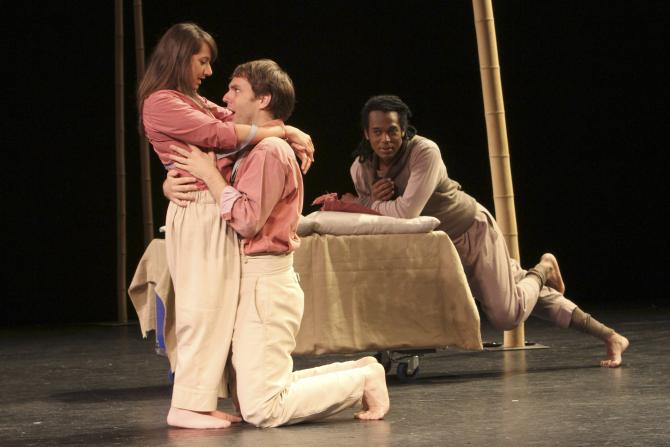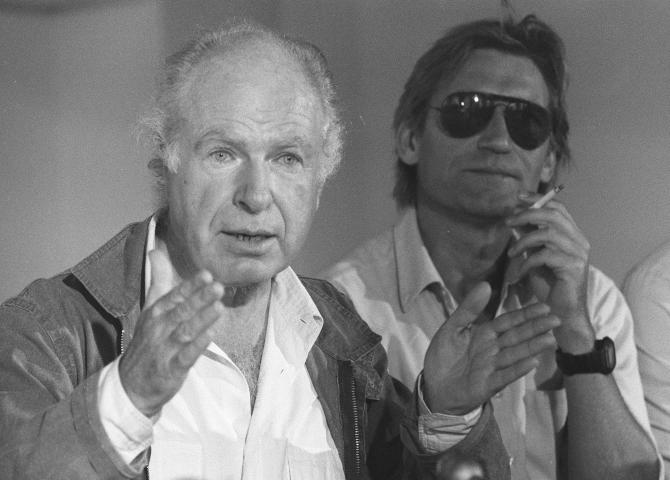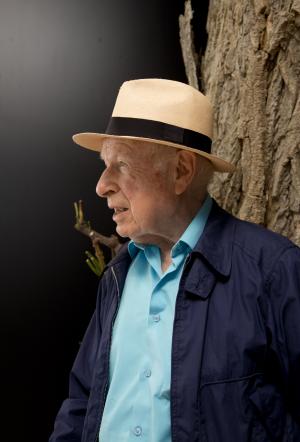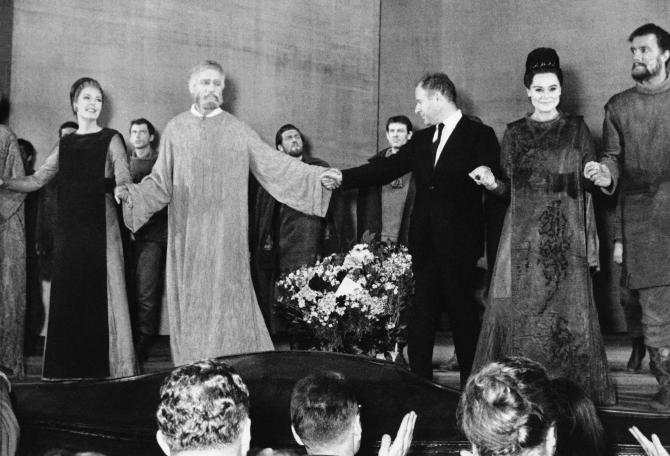(RE)see: Peter Brook the African
First staged at 17
Born in London on March 21, 1925, this son of Jewish Lithuanian immigrants made his first production at the age of 17.
If he dreams of cinema, he quickly heads for the theater. At 20, an Oxford graduate, he was already a professional director and, two years later, his productions in Stratford-upon-Avon, Shakespeare’s birthplace, unleashed passions. At 30, he is already directing big hits on Broadway.
For the Royal Shakespeare Company (RSC), he staged numerous texts from “Bard”which is for him “the filter through which the experience of life passes”.
Much of his career spent in France
It was in the 1960s, after dozens of successes, including many plays by Shakespeare, and after having conducted the greatest – from Laurence Olivier to Orson Welles, began its experimental period.
I can take any empty space and call it a scene. Peter Brook.
He created with the Royal Shakespeare Company a “King Lear” stripped (1962) and above all his surprising production of “A Midsummer Night’s Dream” (1970) in a gymnasium in the shape of a white cube: this is the theory of “empty space” qui will definitely leave its mark on contemporary theatre.
First published in book form in 1968, it gives free rein to the public’s imagination and is considered a “Bible” for lovers of avant-garde theatre. “I can take any empty space and call it a stage” is one of his famous phrases.
“The visionary, the provocateur, the prophet, the trickster and the friend with the bluest eyes I have ever seen, has left the house”, fellow director and actor Simon McBurney tweeted on Sunday. His “Marat/Sade” fascinates London and New York and earned him a Tony Award in 1966.
In the early 1970s, he moved to France where he founded the “International Center for Theater Research”at the Théâtre des Bouffes du Nord.

He stages monumental pieces nourished by exoticism, with actors from different cultures, and will shoot all over the world, often in unseen places: from African villages to the streets of the Bronx via the Parisian suburbs.
His most famous piece is “The Mahabharata”a nine-hour epic of Hindu mythology (1985), which he presented for the first time at the Avignon Festival and which was adapted for the cinema in 1989.

In the 90s, when he triumphed in the United Kingdom with “Oh good days”, by Samuel Beckett, critics hail him as “the best director that London doesn’t have”.
Peter Brooke and Africa
In the theater of Peter Brooke appears a constant presence: the African continent. This privileged relationship goes through many trips and stagings of African atmosphere and a long collaboration with African actors.
“Peter Brook is the first director to address Africa. Africa was then rarely considered a territory of theatrical interest”Rosaria Ruffini, Peter Brooke Theater specialist.
“In his search for regeneration, Brook broke away from the theatrical trends of the time and embarked on a completely original journey: he was the first director to address Africa, while most theater artists rather turned towards the East”underlines the academic Rosaria Ruffini, author of an article “The Africas of Peter Brook’s theatre”.
“Africa was then rarely considered a territory of theatrical interest. A victim of colonial cultural categories and models, the continent is an unknown that often arouses suspicion and perplexity”writes again the academic specialist in the theater of Peter Brook.
He then staged great African intellectuals and writers. In The bone the troupe brings a Senegalese village to life. The bone is a short and light farce which marks the British director’s first step into African dramaturgy. His show is an adaptation of the play by Senegalese writer and intellectual Birago Diop.
Birago Diop (1913-1989) is a well-known Senegalese writer and poet known in particular for his relationship with Negritude and the writing down of traditional tales from African oral literature. It also adapts black South African authors from the 1980s in full apartheid.
The Burkinabe and Malian actor Sotigui Kouyaté (1936-2010), one of his favorite actors
“His stagings taken from South African texts: Woza Albert! (1989), The Island (1999), Le Costume (1999), Sizwe Banzi est mort (2006) draw a true “South African cycle” to the interior of his repertoire. These four productions are based on the texts of South African playwrights who worked during apartheid in conditions of clandestinity and censorship, when all forms of art were forbidden to blacks”emphasizes Rosaria Ruffini in “The Africas of Peter Brook’s Theatre”.
Sotigui Kouyaté (1936-2010), actor, Malian and Bukinabé director is one of his favorite actors. Sotigui Kouyaté plays in the adaptation of the Mahabharata on stage in 1985. He plays in the Storm (1990), The suit (2000), The Tragedy of Hamlet (2003). Sotigui Kouyaté won the 2009 Silver Bear for Best Actor in Berlin Film Festival “London River” of the Franco-Algerian Rachid Bouchareb not failing to highlight his working relationship with Peter Brook in the success of his career.
First African resident of the Comédie Française (entered in 2002) Bakary Sangaré born in 1961 and trained at the National Institute of Arts in Bamako also worked regularly with Peter Brook. He played among others in Wow Albert! adaptation from the text of the South African writer Barney Simon.
Peter Brook was one of the first to introduce diversity, and it was no small revolution, in a theater that was essentially white.
Olivier Py, director of the theater of the Avignon festival.
Peter Brook was one of the first to give African and black actors a chance.
“Peter Brook was one of the first to introduce diversity, and it was no small revolution, in a theater that was essentially white”underlines Olivier Py, director of the Avignon theater festival.
Peter Brook After an adventure of more than 35 years at the Bouffes du Nord, Peter Brook left the management of the theater in 2010, at the age of 85, while continuing to stage productions there, until recently.
“Peter Brook gave us the most beautiful silences in the theater but this last silence is infinitely sad”reacted on Twitter the French Minister of Culture Rima Abdul Malak, believing that with him “the scene was purified to the most vivid intensity”.
In 2019, he pays tribute in “Why?” to Meyerhold, a great Russian figure in the theater and victim of the Stalinist purges, recalling one of his quotes: “Theatre is a dangerous weapon”.
He has always refused to do committed theatre, preferring theater that invites reflection or spirituality, whether with Shakespearian plays or adaptations like Carmen.

“Some journalists come and ask me: ‘So you think you can change the world?’confided in 2018 to AFP the man who had been shaken three years earlier by the death of his wife, actress Natasha Parry.
In addition to his faithful collaborator Marie-Hélène Estienne, he leaves behind two children, director Simon Brook and theater director Irina Brook.
Peter Brook a giant, inspired by Africa, who changed the face of theater forever

